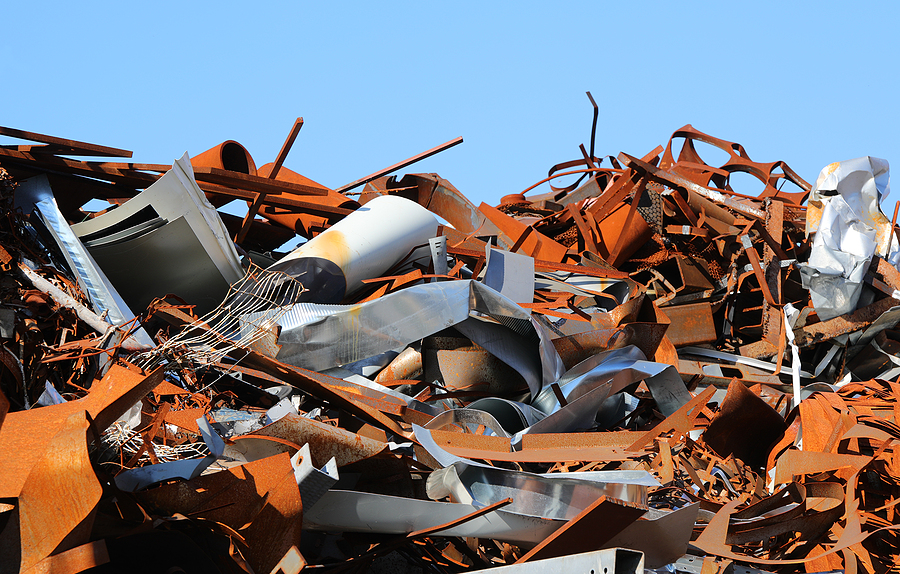
Davis Index Anticipates Decreasing Prices
According to the latest report from Davis Index, there is potential for a decline in demand and prices of ferrous scrap, due to lower levels of steel output observed this year relative to last years figures.
This scenario could lead to weak demand for ferrous scrap during early May transactions resulting in price declines by roughly $20 per ton or more.
Based on this prediction from US based scrap buyers/sellers, cited by Davis Index report for May 2023 compared with April figures, prices may experience a drop somewhere between $20-$50 per ton, as mills reduce purchasing during this period following a major inventory clean out at the end of 2022.
Additionally, late April saw reductions in bids from Turkish and Indian subcontinent buyers on raw materials which resulted in considerably lower prices for HMS scrap at ports across India, Bangladesh, and Pakistan. Such declines averaged around $5 per ton with variations seen on shipments made to Turkey.
In this fluid situation businesses’ reactions show diversity based on pricing strategies, some opting for consistency, while others reducing rates by about $5 per ton. Nevertheless, these trends suggest an imminent shift in market dynamics that global stakeholders must observe.
Ramadan’s Impact on the Market
As Ramadan concludes, several scrap merchants expect that any impetus for reducing metal waste costs will likely fade quickly, because of prevailing economic factors like consistent steel utilization by several massive economies worldwide. Despite recent downward tendencies on pricing and quotes, regarding scarcity, it appears that this dip might be short-lived.
“We’re going to see Turkish prices move up again [after] Ramadan because buyers need to buy,” a scrap trader stated. “The first two or three buyers will luck out and get their cargoes at the current bottom, then we’ll some sellers backing off holding out for better prices realizing we’re on the move again.”
“India won’t have much of a choice and will also move their prices up as a result of the U.S. East Coast sales moving up, and eventually the U.S. domestic mills for May will also kick it up a few notches.”
ISRI Offers Insight
Regarding supply, visitors to the 2023 Institute of Scrap Recycling Industries (ISRI) convention in Nashville, Tennessee this past April reported that material flows from scrap processors remain below the amount seen in 2022, or have stayed “stable at best.” Several attendees echoed these sentiments during conversations with Recycling Today’s representatives.
Though domestic steel production has been limited in 2023, there are some hopeful predictions being made for global markets. Scrap flows mirror these signs of optimism as they remain moderate.
American Iron and Steel Institute (AISI) Reports Figures
Per the latest findings published by the American Iron and Steel Institute (AISI), US steel production levels recorded between January through April 2023 amounted to 28.4 million tons, signifying a drop of around 4.4 percentage points, compared with figures from same period last year, when steel mills produced 29.7 million tons.
As of April’s close, American mills report running at 76.3 percent capacity building momentum as weekly output rates increased by 0.9 percent, since prior data sources were examined.
In March of this year, the World Steel Association (Worldsteel) reports that on average, across sixty three countries, steel production increased by 1.7 percentage points, a positive sign as demand for commodities picks up amid recovery trends across industries. Furthermore, three significant markets indicate optimistic trends within the US scrap processing sector, noticeably in March of 2023, when domestic steel production surged 11.7 percent higher than Februarys figures.
Sources assert that not only added workdays, but also robust consumer driven demand played a role in this development.
MRAI Conference
March also saw a marked growth in Indian steel production with Worldsteel reporting 11.4 million metric tons of steel created, an impressive 14 percent increase from the 10 million metric tons produced during February.
Speaking recently during the 2023 MRAI International Material Recycling Conference in Kochi, India, Shri. Jyotiraditya Scindia, the current Minister of Steel, emphasized the ever-growing importance of ferrous scrap in a global economy focused on decarbonization and increased production.
“Today’s 15 percent of scrap usage, which will increase to almost 25 percent in the next five years, [and] with the Vision of 2047 [ministry plan], that means the percentage of scrap for production of steel should go up to 50 percent, and [the sector will be] only 50 percent be dependent on iron ore,” Scindia explained.
Addressing members of MRAI, the minister said “You are an industry that contributes to the today of India and it needs to be pushed in years to come.”
“As being the world’s second-largest steel producer, India needs to become a responsible steel producer and therefore, we anticipate incremental usage of scrap in the coming years,” MRAI President Sanjay Mehta stated at the event. “MRAI also urges the government to enhance the usage of secondary steel in government infrastructure projects, announce circular economy recycling parks and its appropriate policies for their implementation which will gain importance in 2023.”
Turkish Steel Exports
March was a milestone for Turkey’s steel exports, as its output spiked by 28.6 percent, compared to the month before. Also, 2.7 million metric tons were recorded this March, an increase from the previous month’s figure of 2.1 million metric tons. This is likely due to improvement being made by the scrap-fed electric arc furnace (EAF) steel mills recovering from February’s earthquakes which caused substantial damage.
Although the ferrous market remains uncertain at this time, glimmers of optimism appear to be present.
